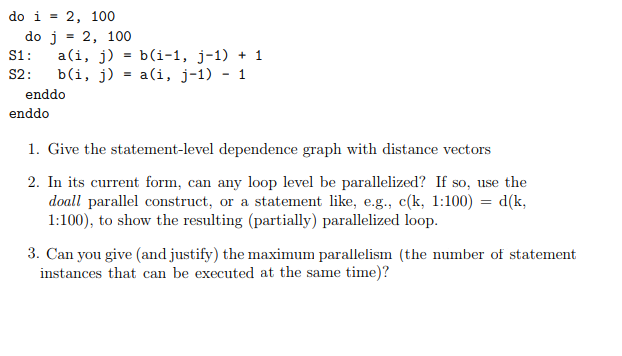Answered step by step
Verified Expert Solution
Question
1 Approved Answer
do i 2, 100 do j-2, 100 S1: a(i, j) - b(i-1, j-1) 1 S2: b(i, j) = a(i, j-1) -1 enddo enddo 1. Give

Step by Step Solution
There are 3 Steps involved in it
Step: 1

Get Instant Access to Expert-Tailored Solutions
See step-by-step solutions with expert insights and AI powered tools for academic success
Step: 2

Step: 3

Ace Your Homework with AI
Get the answers you need in no time with our AI-driven, step-by-step assistance
Get Started


